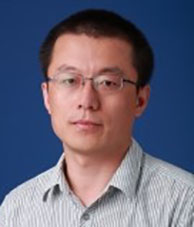
报告时间:2017年3月3日(周五)上午9:30
报告地点:蒙民伟楼201报告厅
报告人:Feng Ding (a Center
for Multidimensional Carbon Materials (CMCM), Institute for Basic Science
(IBS), Ulsan 689-798, Republic of Korea; b School of Materials
Science and Engineering, Ulsan National Institute of Science and Technology
(UNIST), Ulsan 689-798, Republic of Korea. Email. f.ding@unist.ac.kr)
报告题目:The Mechanism of Low
Dimensional Carbon Materials Synthesis--From Theoretical Study to Experimental
Design
摘要:
The controllable synthesis of high quality low-dimensional
materials, such as carbon nanotubes and graphene, is highly desired for both
fundamental research and their industrial applications. It was also a great
challenge in the society of low-dimensional materials. In the past we have paid
great effort to explore the mechanism of low-dimensional materials’ growth and
the potential routes towards the synthesis of the desired materials in a
controllable manner. In this talk, I will present our theoretical study on the
growth mechanism of low dimensional nanomaterials, the understanding of various
experimental puzzles based on our theoretical results and the realization of
the controllable synthesis experimentally. My talk will cover the
following contents:
(i)
The theory of nucleation and growth of carbon nanotubes [1] and the strategies
towards the chirality control during growth [2];
(ii)
The theory on the mechanism of graphene CVD growth [3] and the strategies
toward the quick synthesis of wafer sized graphene and its controllable growth [4];
(iii)
The kinetics of 2D materials growth and etching and the experimental control of
their morphology.
These studies clearly showed that, beyond the calculation of
various materials properties, theoretical exploration also can play a vital
role in experimental design and material synthesis.
References:
[1] Nano Lett. 8, 463 (2008); PNAS. 106, 2506 (2009); PRL
107 156101 (2011); PRL 108 245505 (2012); ACIE, 127 6166 (2015), Chem. Sci. 6, 4704
(2015).
[2] Sci Adv. 2, e1501729 (2016); Nature 510, 522 (2014); Nat.
Comm. 4, 2205 (2013); Nature, in press, (2016).
[3] JACS 133, 16072 (2011); JACS 133, 5009 (2011); JACS 134, 2970
(2012); ACIE 53, 14031 (2014); JACS 134, 6204 (2012); ACS Nano 6, 3243 (2012);
JPC Lett 3 2822 (2012); JACS. 135 4476 (2013); JACS, 136 3040 (2014); Chem.
Sci. 5, 4639 (2014); JPC Lett. 5, 3039(014); Chem. Sci.
DOI: 10.1039/C6SC04535A (2017).
[4] PNAS
110, 20386 (2013); Ad. Mat. 27, 1376 (2015); Ad. Mat. 27, 7839 (2015); Nat.
Comm. 6, 6499 (2015); Nat. Comm. 6, 6160 (2015); Nano Res. 8, 3164 (2015); Nat.
Mat. 15, 43 (2016); Nat. Nano. 11, 930 (2016).
报告人简介:
Feng Ding obtained his Bs, Ms and PhD
degrees from Huazhong University of Science and Technology, Fudan University
and Nanjing University in 1993, 1996 and 2002, respectively. Then he was a
Postdoctoral Research Fellow in Gothenburg University and Chalmers University
in Sweden from 2003 to 2005. From 2005, he joined Rice University as a Research
Scientist until the end of 2008. From 2009-2016, he joined the Institute of
Textile and Clothing of Hong Kong Polytechnic University as an Assistant
Professor and Associate Professor (from 2013). From 2017, he joined UNIST as a
Distinguished Professor and the IBS-CMCM as a group leader.
Prof. Ding’s research group’s research interests
mainly focus on the computational method development, theoretical exploration
of various carbon materials and 2D materials, especially on their formation
mechanism, the kinetics of their nucleation, growth and etching. Prof. Ding has
published more than 160 SCI papers in leading journals of natural science, such
as Nature serious journals, PRL, JACS, ACIE, etc.